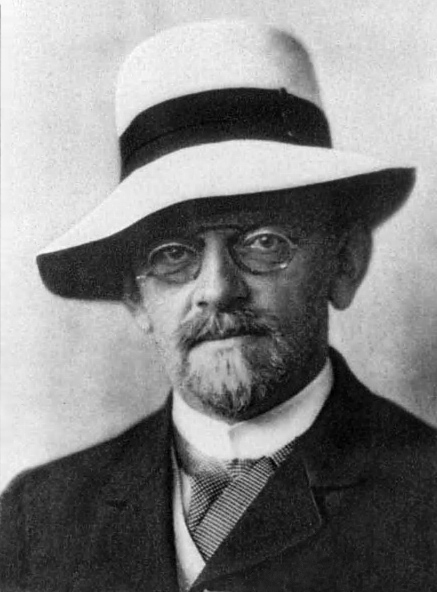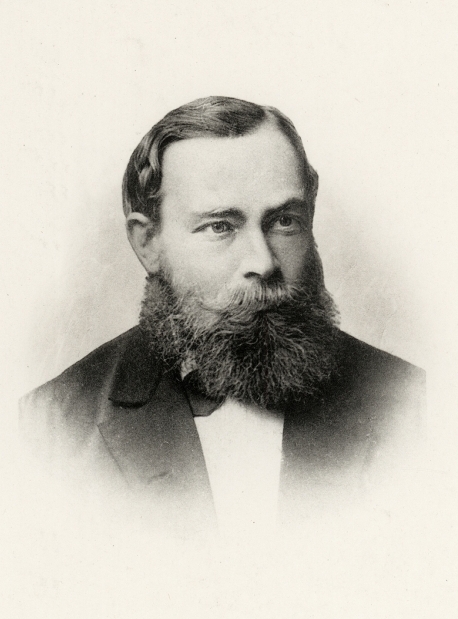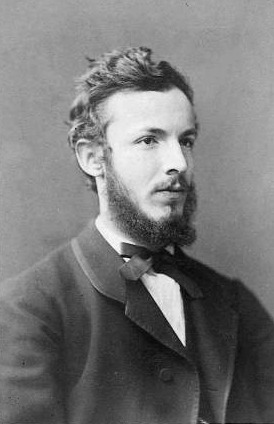|
Hume's Principle
Hume's principle or HP says that, given two collections of objects \mathcal F and \mathcal G with properties F and G respectively, the number of objects with property F is equal to the number of objects with property G if and only if there is a one-to-one correspondence (a bijection) between \mathcal F and \mathcal G. In other words, that bijections are the "correct" way of measuring size. HP can be stated formally in systems of second-order logic. It is named for the Scottish philosopher David Hume and was coined by George Boolos. The principle plays a central role in Gottlob Frege's philosophy of mathematics. Frege shows that HP and suitable definitions of arithmetical notions entail all axioms of what we now call second-order arithmetic. This result is known as Frege's theorem, which is the foundation for a philosophy of mathematics known as neo-logicism. Origins Hume's Principle appears in Frege's ''Foundations of Arithmetic'' (§63), which quotes from Part III of Boo ... [...More Info...] [...Related Items...] OR: [Wikipedia] [Google] [Baidu] |
One-to-one Correspondence
In mathematics, a bijection, bijective function, or one-to-one correspondence is a function between two sets such that each element of the second set (the codomain) is the image of exactly one element of the first set (the domain). Equivalently, a bijection is a relation between two sets such that each element of either set is paired with exactly one element of the other set. A function is bijective if it is invertible; that is, a function f:X\to Y is bijective if and only if there is a function g:Y\to X, the ''inverse'' of , such that each of the two ways for composing the two functions produces an identity function: g(f(x)) = x for each x in X and f(g(y)) = y for each y in Y. For example, the ''multiplication by two'' defines a bijection from the integers to the even numbers, which has the ''division by two'' as its inverse function. A function is bijective if and only if it is both injective (or ''one-to-one'')—meaning that each element in the codomain is mapped f ... [...More Info...] [...Related Items...] OR: [Wikipedia] [Google] [Baidu] |
Aristotle
Aristotle (; 384–322 BC) was an Ancient Greek philosophy, Ancient Greek philosopher and polymath. His writings cover a broad range of subjects spanning the natural sciences, philosophy, linguistics, economics, politics, psychology, and the arts. As the founder of the Peripatetic school of philosophy in the Lyceum (classical), Lyceum in Athens, he began the wider Aristotelianism, Aristotelian tradition that followed, which set the groundwork for the development of modern science. Little is known about Aristotle's life. He was born in the city of Stagira (ancient city), Stagira in northern Greece during the Classical Greece, Classical period. His father, Nicomachus (father of Aristotle), Nicomachus, died when Aristotle was a child, and he was brought up by a guardian. At around eighteen years old, he joined Plato's Platonic Academy, Academy in Athens and remained there until the age of thirty seven (). Shortly after Plato died, Aristotle left Athens and, at the request ... [...More Info...] [...Related Items...] OR: [Wikipedia] [Google] [Baidu] |
Philosophy Of Mathematics
Philosophy of mathematics is the branch of philosophy that deals with the nature of mathematics and its relationship to other areas of philosophy, particularly epistemology and metaphysics. Central questions posed include whether or not mathematical objects are purely abstract entities or are in some way concrete, and in what the relationship such objects have with physical reality consists. Major themes that are dealt with in philosophy of mathematics include: *''Reality'': The question is whether mathematics is a pure product of human mind or whether it has some reality by itself. *''Logic and rigor'' *''Relationship with physical reality'' *''Relationship with science'' *''Relationship with applications'' *''Mathematical truth'' *''Nature as human activity'' (science, the arts, art, game, or all together) Major themes Reality Logic and rigor Mathematical reasoning requires Mathematical rigor, rigor. This means that the definitions must be absolutely unambiguous and th ... [...More Info...] [...Related Items...] OR: [Wikipedia] [Google] [Baidu] |
Set Theory
Set theory is the branch of mathematical logic that studies Set (mathematics), sets, which can be informally described as collections of objects. Although objects of any kind can be collected into a set, set theory – as a branch of mathematics – is mostly concerned with those that are relevant to mathematics as a whole. The modern study of set theory was initiated by the German mathematicians Richard Dedekind and Georg Cantor in the 1870s. In particular, Georg Cantor is commonly considered the founder of set theory. The non-formalized systems investigated during this early stage go under the name of ''naive set theory''. After the discovery of Paradoxes of set theory, paradoxes within naive set theory (such as Russell's paradox, Cantor's paradox and the Burali-Forti paradox), various axiomatic systems were proposed in the early twentieth century, of which Zermelo–Fraenkel set theory (with or without the axiom of choice) is still the best-known and most studied. Set the ... [...More Info...] [...Related Items...] OR: [Wikipedia] [Google] [Baidu] |
Edward Zalta
Edward Nouri Zalta (; born March 16, 1952) is an American philosopher who is a senior research scholar at the Center for the Study of Language and Information at Stanford University. He received his Bachelor of Arts, BA from Rice University in 1975 and his PhD from the University of Massachusetts Amherst in 1981, both in philosophy. Zalta has taught courses at Stanford University, Rice University, the University of Salzburg, and the University of Auckland. Zalta is also the Principal Editor of the ''Stanford Encyclopedia of Philosophy''.. Research Zalta's most notable philosophical position is descended from the positions of Alexius Meinong and Ernst Mally, who suggested that there are many non-existent objects. On Zalta's account, some objects (the ordinary concrete ones around us, like tables and chairs) ''exemplify'' properties, while others (abstract objects like numbers, and what others would call "non-existent objects", like the Round square copula, round square, and the m ... [...More Info...] [...Related Items...] OR: [Wikipedia] [Google] [Baidu] |
Stanford Encyclopedia Of Philosophy
The ''Stanford Encyclopedia of Philosophy'' (''SEP'') is a freely available online philosophy resource published and maintained by Stanford University, encompassing both an online encyclopedia of philosophy and peer-reviewed original publication. Each entry is written and maintained by an expert in the field, including professors from many academic institutions worldwide. Authors contributing to the encyclopedia give Stanford University the permission to publish the articles, but retain the copyright to those articles. Approach and history As of August 5, 2022, the ''SEP'' has 1,774 published entries. Apart from its online status, the encyclopedia uses the traditional academic approach of most encyclopedias and academic journals to achieve quality by means of specialist authors selected by an editor or an editorial committee that is competent (although not necessarily considered specialists) in the field covered by the encyclopedia and peer review. The encyclopedia was created i ... [...More Info...] [...Related Items...] OR: [Wikipedia] [Google] [Baidu] |
Axiomatic Set Theory
Set theory is the branch of mathematical logic that studies Set (mathematics), sets, which can be informally described as collections of objects. Although objects of any kind can be collected into a set, set theory – as a branch of mathematics – is mostly concerned with those that are relevant to mathematics as a whole. The modern study of set theory was initiated by the German mathematicians Richard Dedekind and Georg Cantor in the 1870s. In particular, Georg Cantor is commonly considered the founder of set theory. The non-formalized systems investigated during this early stage go under the name of ''naive set theory''. After the discovery of Paradoxes of set theory, paradoxes within naive set theory (such as Russell's paradox, Cantor's paradox and the Burali-Forti paradox), various axiomatic systems were proposed in the early twentieth century, of which Zermelo–Fraenkel set theory (with or without the axiom of choice) is still the best-known and most studied. Set the ... [...More Info...] [...Related Items...] OR: [Wikipedia] [Google] [Baidu] |
Transfinite Number
In mathematics, transfinite numbers or infinite numbers are numbers that are " infinite" in the sense that they are larger than all finite numbers. These include the transfinite cardinals, which are cardinal numbers used to quantify the size of infinite sets, and the transfinite ordinals, which are ordinal numbers used to provide an ordering of infinite sets. The term ''transfinite'' was coined in 1895 by Georg Cantor, who wished to avoid some of the implications of the word ''infinite'' in connection with these objects, which were, nevertheless, not ''finite''. Few contemporary writers share these qualms; it is now accepted usage to refer to transfinite cardinals and ordinals as ''infinite numbers''. Nevertheless, the term ''transfinite'' also remains in use. Notable work on transfinite numbers was done by Wacław Sierpiński: ''Leçons sur les nombres transfinis'' (1928 book) much expanded into '' Cardinal and Ordinal Numbers'' (1958, 2nd ed. 1965). Definition Any finite natu ... [...More Info...] [...Related Items...] OR: [Wikipedia] [Google] [Baidu] |
Ordinal Number
In set theory, an ordinal number, or ordinal, is a generalization of ordinal numerals (first, second, th, etc.) aimed to extend enumeration to infinite sets. A finite set can be enumerated by successively labeling each element with the least natural number that has not been previously used. To extend this process to various infinite sets, ordinal numbers are defined more generally using linearly ordered greek letter variables that include the natural numbers and have the property that every set of ordinals has a least or "smallest" element (this is needed for giving a meaning to "the least unused element"). This more general definition allows us to define an ordinal number \omega (omega) to be the least element that is greater than every natural number, along with ordinal numbers , , etc., which are even greater than . A linear order such that every non-empty subset has a least element is called a well-order. The axiom of choice implies that every set can be well-orde ... [...More Info...] [...Related Items...] OR: [Wikipedia] [Google] [Baidu] |
Georg Cantor
Georg Ferdinand Ludwig Philipp Cantor ( ; ; – 6 January 1918) was a mathematician who played a pivotal role in the creation of set theory, which has become a foundations of mathematics, fundamental theory in mathematics. Cantor established the importance of one-to-one correspondence between the members of two sets, defined infinite set, infinite and well-order, well-ordered sets, and proved that the real numbers are more numerous than the natural numbers. Cantor's method of proof of this theorem implies the existence of an infinity of infinities. He defined the cardinal number, cardinal and ordinal number, ordinal numbers and their arithmetic. Cantor's work is of great philosophical interest, a fact he was well aware of. Originally, Cantor's theory of transfinite numbers was regarded as counter-intuitive – even shocking. This caused it to encounter resistance from mathematical contemporaries such as Leopold Kronecker and Henri Poincaré and later from Hermann Wey ... [...More Info...] [...Related Items...] OR: [Wikipedia] [Google] [Baidu] |
Cardinal Number
In mathematics, a cardinal number, or cardinal for short, is what is commonly called the number of elements of a set. In the case of a finite set, its cardinal number, or cardinality is therefore a natural number. For dealing with the case of infinite sets, the infinite cardinal numbers have been introduced, which are often denoted with the Hebrew letter \aleph (aleph) marked with subscript indicating their rank among the infinite cardinals. Cardinality is defined in terms of bijective functions. Two sets have the same cardinality if, and only if, there is a one-to-one correspondence (bijection) between the elements of the two sets. In the case of finite sets, this agrees with the intuitive notion of number of elements. In the case of infinite sets, the behavior is more complex. A fundamental theorem due to Georg Cantor shows that it is possible for two infinite sets to have different cardinalities, and in particular the cardinality of the set of real numbers is gre ... [...More Info...] [...Related Items...] OR: [Wikipedia] [Google] [Baidu] |
Euclid's Elements
The ''Elements'' ( ) is a mathematics, mathematical treatise written 300 BC by the Ancient Greek mathematics, Ancient Greek mathematician Euclid. ''Elements'' is the oldest extant large-scale deductive treatment of mathematics. Drawing on the works of earlier mathematicians such as Hippocrates of Chios, Eudoxus of Cnidus and Theaetetus (mathematician), Theaetetus, the ''Elements'' is a collection in 13 books of definitions, postulates, propositions and mathematical proofs that covers plane and solid Euclidean geometry, elementary number theory, and Commensurability (mathematics), incommensurable lines. These include Pythagorean theorem, Thales' theorem, the Euclidean algorithm for greatest common divisors, Euclid's theorem that there are infinitely many prime numbers, and the Compass-and-straightedge construction, construction of regular polygons and Regular polyhedra, polyhedra. Often referred to as the most successful textbook ever written, the ''Elements'' has continued to be ... [...More Info...] [...Related Items...] OR: [Wikipedia] [Google] [Baidu] |





